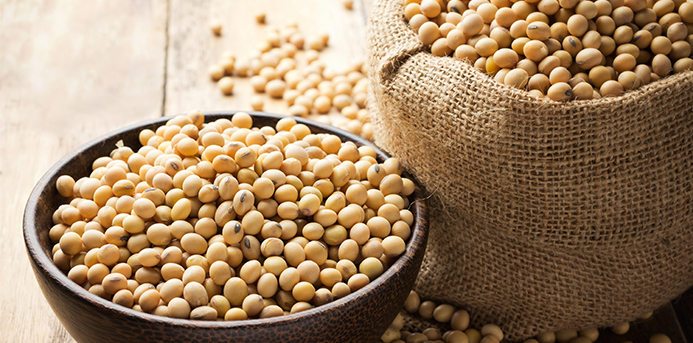If you’re anything like me, the only time you encountered soy growing up in the ‘60s and ‘70s was while consuming Chinese take-out.
Even though soy has been integral to Asian cuisine for centuries, it was virtually nonexistent in the typical American diet until about 15 years ago. In fact, for a long time the USDA classed soybeans as an industrial product, not a food. Now soy acreage in the U.S. is bumping up against King Corn and products containing soybeans in one form or another are seemingly ubiquitous. Yet most of us know very little about soy.
According to Nancy Chapman, Executive Director of the Soyfoods Association of North America, “What makes soy unique among plant protein sources is that it provides all the amino acids that are necessary to support growth.” Soybeans are low in saturated fat, fiber-rich and full of several important vitamins and minerals. They also cost less than many other food options, making them “a really great investment for consumers.” So why the continuing concerns about soy’s increasing popularity? The answer isn’t simple.
The media has often focused on the potential link to hormone-sensitive cancers. Soybeans contain isoflavones (plant estrogens) that have been shown to increase tumor growth in animal studies. But, as Seema Khan, a surgical oncologist with the Robert H. Lurie Comprehensive Cancer Center of Northwestern University and the Lynn Sage Comprehensive Breast Center, explains, “The initial human evidence from epidemiological studies that focus on the consumption of whole soy foods, the classical foods, has not shown any harm. In fact, there are a couple of large studies from the Far East showing benefits.”
The jury is still out on isoflavones, yet several other concerns with soy are already clear. Soybeans contain “anti-nutrients” that block absorption and digestion of vitamins and minerals and can lead to deficiencies and malnutrition. Soy also has compounds that can cause endocrine disruption, create crystal deposits throughout the body, and depress thyroid function.
So how does a food with so many potential problems become a staple of Asian cuisines? The answer is that it didn’t—at least not right away. It took the Chinese more than 1,000 years to figure out how to prepare soybeans properly. The process has many steps and is both complicated and time consuming. Often, it requires fermentation.
Unfortunately, most Americans consume unfermented soy products like soymilk and tofu, and these can be made using industrial processes that bear little resemblance to age-old Asian techniques. Soy protein isolate and textured vegetable proteins (TVP), two additives found in many processed foods, have additional problems. They are stripped of the whole bean’s beneficial fiber, unsaturated fats and carbohydrates using chemical and mechanical processes that create toxins, carcinogens and high levels of aluminum. Dr. Khan emphasizes that foods made from whole soybeans, and processed food additives or supplements that concentrate isolated compounds, are very different. “The composition of the whole food is very complex and we really don’t have a good understanding of how all the nutritional components interact with each other. So when I talk to my patients, I address whole foods and additives or supplements separately.”
However, even if you stick to whole soybeans that are prepared correctly, more than 90 percent of the soy grown in the U.S. has been genetically modified to withstand more liberal chemical spraying. These crops have been shown to have significant residues of carcinogenic glyphosates even after processing.
So how do you benefit from soy without risking health problems? First, always look for the organic label so you’re sure you’re not consuming GMOs with residual pesticides and herbicides. Next, look for fermented products like miso, tempeh and fermented tofu. If you want to include unfermented soymilk and tofu in your diet, make sure your brand starts with whole soybeans, uses traditional preparation techniques and enriches with Vitamin D3 (not D2) and B12. Is there a healthy option for soy protein isolate or textured vegetable protein? Like other food additives and supplements, use sparingly, if at all.

